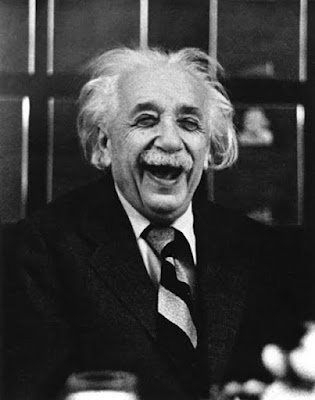Why moon doesn't fall due to Gravity???
What a great question?
Gravity ——-
What is gravity? It is an interaction between objects that have the property we call "mass". Then what is mass? How about this definition (that is technically wrong but still useful): mass is the number of electrons, protons, and neutrons that make up an object. With the mass, the gravitational interaction is a force with the following properties:
- It depends on the mass of both of the objects involved in the interaction.
- The greater the mass (for either object), the greater the gravitational force.
- If you increase the distance between the two objects, the gravitational force decreases.
- The gravitational force on one object in the interaction always is in the direction of the other object. In other words, the gravitational force is an attractive force.
There are lots of other cool things about gravity, but this will be enough to get us started.
Forces ——
So I have a force on the moon. What do forces do to an object? In short, you can say that forces CHANGE the motion of the object. I think it would be a bad idea to say that forces make things move. While that might not be technically wrong all the time, it is at the very least misleading. Let me look at three different cases for forces.
Force pushing in the same direction as the velocity of the object. Suppose an object is moving to the left with a force pushing in the same direction? Here is a diagram of that case.

One single and constant force makes the object speed up in this case. Don't fall into the common trap of thinking that a constant force makes an object move at a constant speed. This just isn't true.
Force pushing in the opposite direction as the velocity of the object. This is almost the same case as above, but for an object moving to the right the force would be to the left.

Here the object slows down. But really, this isn't what I wanted to talk about. If the moon is orbiting the Earth at a constant speed, it neither speeds up nor slows down.
Force pushing perpendicular to the velocity of the object.Let me call this a "sideways" force.

If it is just a sideways force, the object doesn't speed up and it doesn't slow down. It just turns. Of course, in order to exert a continuous sideways force, the force would have to point in a different direction as the object turns or it wouldn't still be "sideways". Here is an example. Take a ball at the end of a string - or maybe a yoyo since the string is already attached. Swing the ball around in a circle. Why does it move this way? The string pulls on the ball. But since the string can only pull in the direction of the string (you can't push with a string), the ball has a sideways force on it and changes direction.
Can a force be sideways and in the direction of the velocity at the same time? Yes. In this case, the object would both speed up AND change directions.
Back to the Moon —————-
I am sure you have noticed that I still didn't answer the question. Why doesn't the moon fall into the Earth? Maybe I have given you enough information about forces such that you can answer the question yourself. Or maybe I haven't. Here is a diagram of the Earth-moon system.

Oh. You don't like that diagram. I know why - because it is drawn to scale. Yes, the moon is really that far away from the Earth. You never see it this way in textbooks because it is too hard to see. Here is the Earth-moon with the moon only 1/5ththe distance it is suppose to be (but the correct relative size).

Here you can see the red arrow represents the gravitational force on the moon. If the moon were moving in a perfect circle, the gravitational force would always be "sideways" and just cause it to change its direction.
But wait! There's more. Guess what? The moon pulls on the Earth with the exact same magnitude of force that the Earth pulls on the moon since it is the same interaction. But wouldn't this also make the Earth move in a circle? Yup. Essentially, it does. The only thing is that Earth's mass is 81 times greater than the mass of the moon. This means that although it moves in a circle, it moves in a much smaller circle. The circle that the Earth moves around is so small that the center of this circle is inside the Earth. Cool, isn't it?
The Real Moon ————-
I said the gravitational force on the moon would be "sideways" if the moon moved in a perfect circle - but it doesn't. Let me draw an exaggerated diagram of the Earth moon system with a non-circular orbit.

Maybe it is difficult to see, but in this case the gravitational force on the moon is NOT perpendicular to the velocity. What happens in this case? Well, part of the gravitational force is in the same direction as the velocity, the moon will increase in speed. Also, since part of the force is a sideways force, the moon will change direction. This is what happens with most orbits. The moon moves closer to the Earth and speeds up as it does so. As the moon moves away from the Earth, the opposite happens. This is part of the reason behind the Super Moon that was popular a while ago.


Comments
Post a Comment